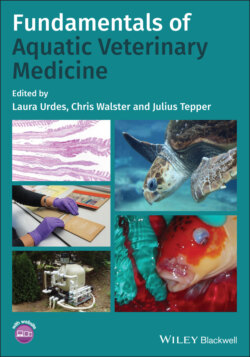Читать книгу Fundamentals of Aquatic Veterinary Medicine - Группа авторов - Страница 45
1.3.3.2 Plants and Algae
ОглавлениеThe type and amount of vegetation in an aquatic environment can have a positive or negative effect on the health of the aquasystem. Vegetation can improve the growth of fish by allowing for shade, shelter, and removal of nitrates and phosphates from the water. At night, excessive vegetation can also decrease the oxygen available to the fish, since plants will use oxygen for respiration and may impede movement of the fish and decrease their ability to catch prey or avoid predation. Studies performed on bass, sunfish and brill have shown that different species of fish react differently to vegetation levels. In one study, the size and life stages of fish also affect the amount of vegetation that is most appropriate. In this study, bass were less tolerant of the plants filling the water column than brill or sunfish. Larger bass were negatively affected when 30% of the water column was filled with plants, while smaller bass were negatively affected when 50% of the water column was filled. These studies express the importance of knowing the species of plant and the species of fish for which the veterinarian is caring.
Floating beds of vegetation are a good answer to nitrate and phosphate removal. Studies performed on rye grass in floating beds has shown that it effectively removes a significant amount of the NO3 (Bartucca et al., 2016). By creating floating beds of vegetation, the nitrate and phosphate levels can be reduced without encumbering the water column. It is important to monitor the oxygen, nitrogen, and phosphorous levels to decide the best density of planting.
